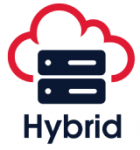Overview
Improve your cloud security with our managed cloud security service
If your organisation is using cloud-hosted infrastructure and applications or considering doing so, it’s essential to ensure that critical assets are protected.
New security tools for organisations with cloud, virtual and hybrid network environments are on the rise to help detect and respond to cyber-attacks. However, just like solutions for on-premise monitoring, these require appropriate skills and resources to be effectively installed, managed and monitored.
A managed cloud security service removes these challenges, enabling your in-house team to focus on other security priorities rather than day-to-day threat detection.
Features
Key features of our hybrid cloud security solutions
Coverage
Threat detection and incident
response in the cloud
Need help with cloud security?
Get in touchWhy Redscan?
Your trusted partner for cloud security management and monitoring

- A leading UK-based MDR company
- Rated 9/10 for overall customer satisfaction
- Red and Blue team CREST SOC expertise
- An outcome focussed approach
- Quick and hassle-free deployment
- Technology agnostic
FAQ
Frequently asked questions
about cloud security
- What is cloud security and why is it required?
-
Cloud security is the implementation of security controls needed to protect confidential information stored within cloud environments and reduce the risk of data breaches.
Cloud computing brings with it a range of benefits including efficiency, scalability and cost savings, but organisations moving IT infrastructure into the cloud cannot afford to ignore the associated security risks.
- How does cloud security work?
-
Cloud security works by combining a range of security controls to harden network defences, improve security hygiene, enhance network visibility and facilitate the rapid detection, response to and remediation of threats and breaches.
- What are the security risks of cloud computing?
-
As more and more critical systems and data is moved to the cloud, environments such as AWS, Azure and GCP become an increasingly attractive target for cybercriminals.
Cloud data breaches are one of the most widespread cloud computing security concerns. Unsecured cloud services can be compromised by cybercriminals, who may access modify, steal or amend confidential information. Other threats to cloud computing include ransomware and Denial of Service (DoS) attacks, which shut down cloud services by flooding them with network traffic.
Private cloud offers more control over security than public cloud, as it is run out of a company’s own datacentre, rather than storing data alongside that of other customers.
- Is cloud storage secure?
-
Most cloud services encode data in an encrypted form. Without a user’s specific decryption key, which is typically stored by the service provider and activated via login credentials, data is not readable. This offers a crucial layer of security, but it is not a silver bullet – keys can be stolen or misused and software flaws can leave user data vulnerable.
Most cloud service providers also have their own basic security functionality designed to help organisations combat the most common threats, but users of cloud computing have a responsibility to consider implementing additional security controls.
Just like with on-premise infrastructure, organisations cannot afford to focus solely on building security at the network perimeter – having visibility of network activity and the ability to detect and respond to threats is vital.
- What is shared responsibility in cloud computing?
-
Cloud service providers like Amazon Web Services, Microsoft Azure and Google Cloud Platform have their own shared responsibility models which state, in the simplest terms, that while the cloud provider is responsible for the security of the cloud, customers are responsible for the security of the data and applications they upload to it.
This means that each cloud provider will manage security controls across its host operating system and virtualisation layer, as well as managing the physical security of its data centres. Customers are responsible for identity and access management, patch management, firewall configuration and other network security measures.
Challenges
Other security challenges
What our customers say
Get in touch to discuss your requirements
We’d be happy to answer any questions you have

Resources















